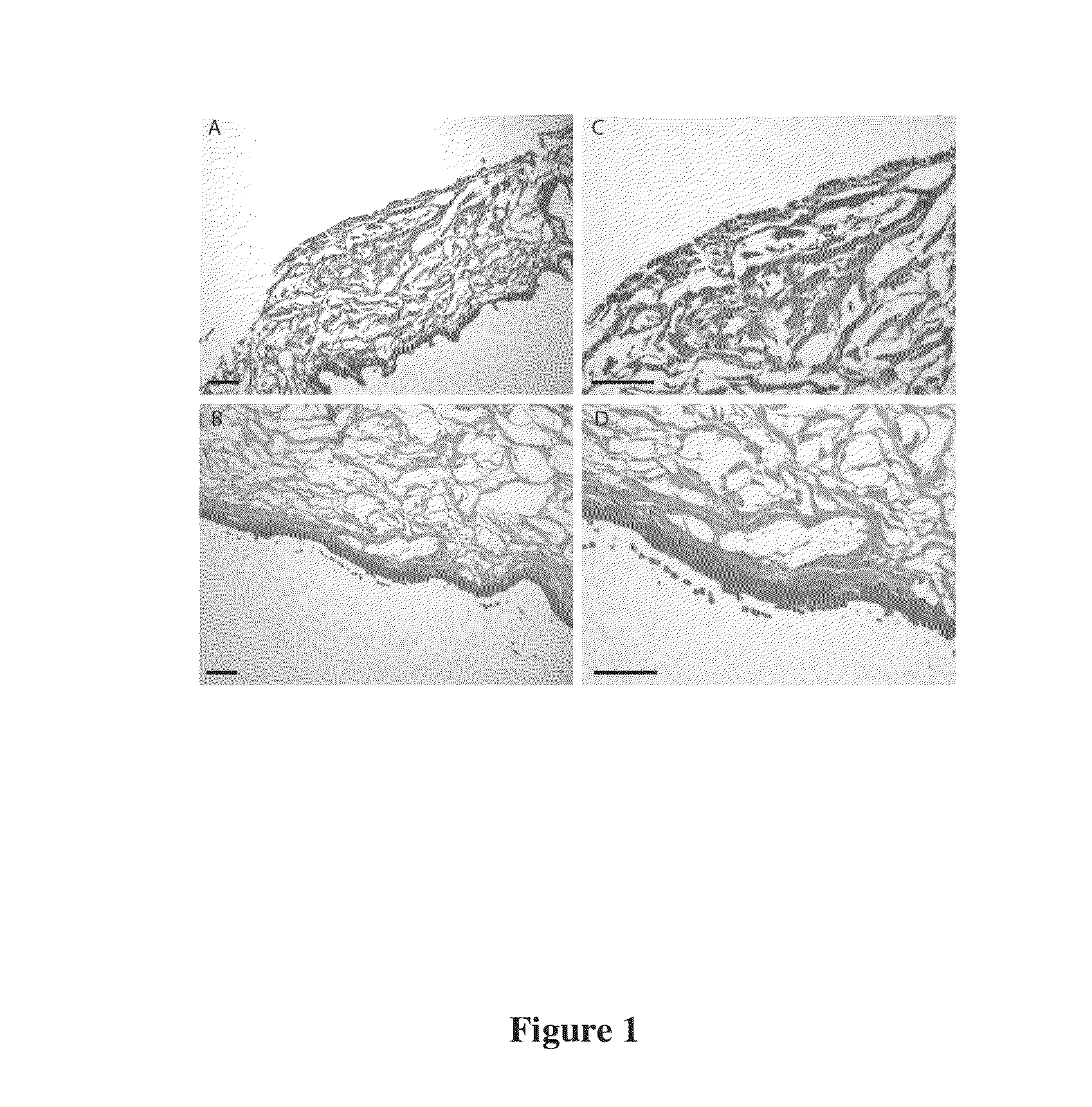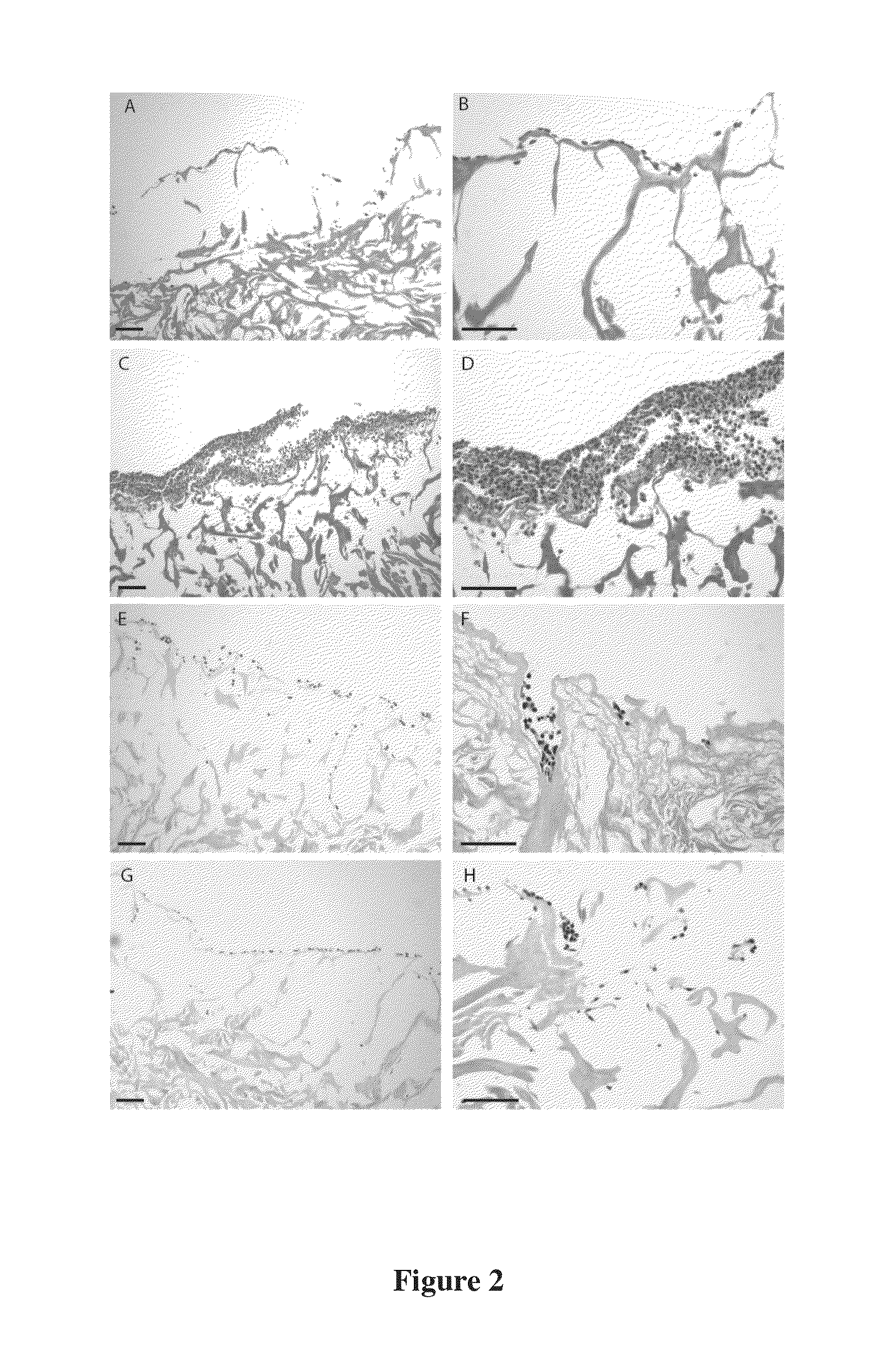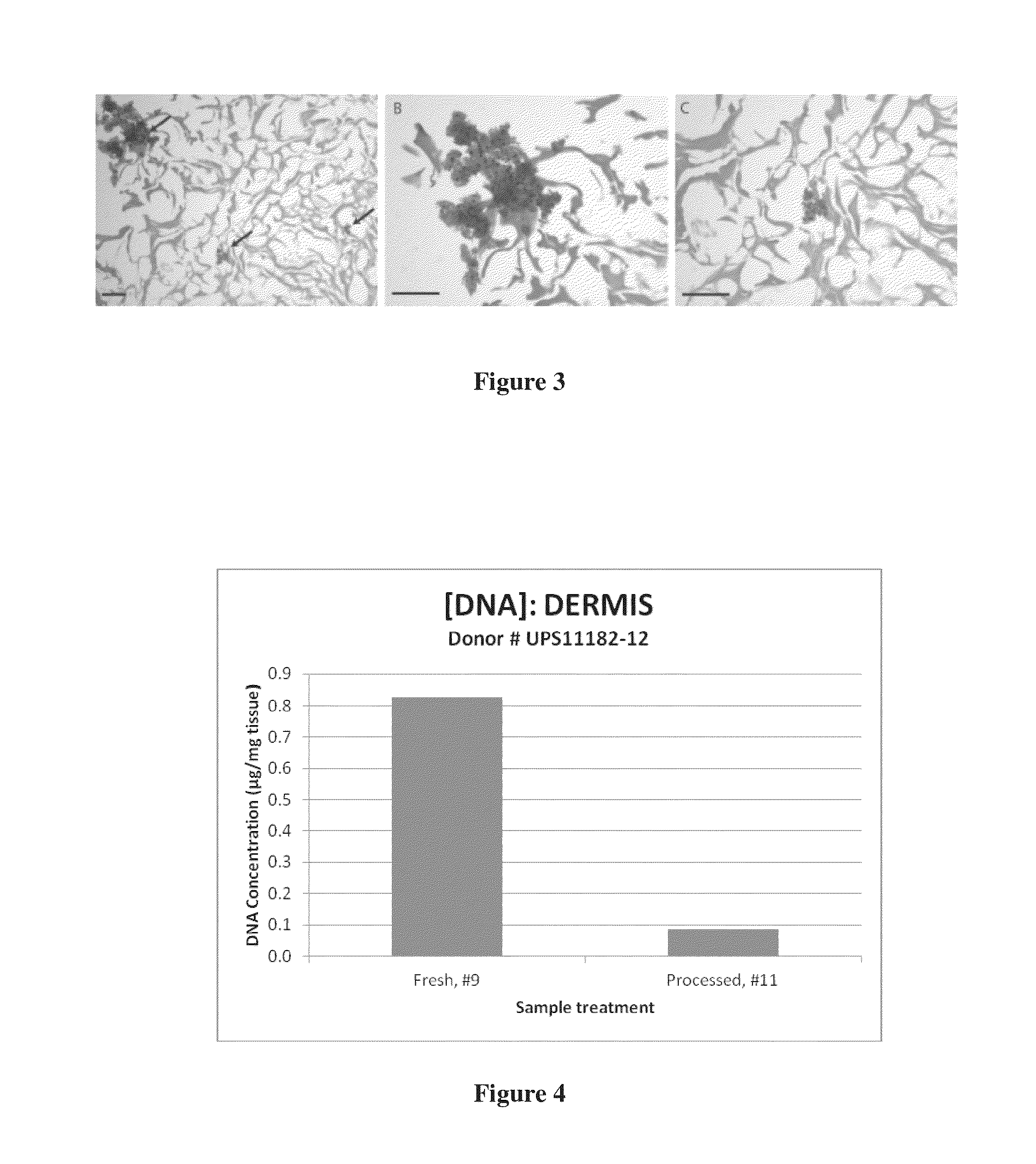Regenerative tissue matrix
a tissue matrix and tissue technology, applied in the field of regenerative tissue matrix, can solve the problems of insufficient decellularization of tissue, insufficient recellularization of tissue, and insufficient current technology to deal with the presence of agents in the damaged myocardium, etc., and achieve the effect of reducing phospholipids and lipids
- Summary
- Abstract
- Description
- Claims
- Application Information
AI Technical Summary
Benefits of technology
Problems solved by technology
Method used
Image
Examples
example 1
Processing (A) of Skin Tissue in the Production of a Dermal Matrix Tissue
1. Procedure
[0086]1.1 Preparation of Skin Connective Tissues[0087]1.1.1 If previously frozen in 1.5 M Sodium Chloride solution, remove wrapped skin package from freezer, place on orbital shaker at 60 RPM, and allow skin to thaw completely for 24 hours at 36° C.±1° C. If freshly recovered, proceed to processing as detailed below. If converting cryo-preserved skin to de-cellularized dermis, remove skin package from freezer and place in an incubator at 36° C.±1° C. After thawing, remove skin from sterile packaging and continue to section 1.2.[0088]1.2 Inspection, Cleaning and Weighing of Tissues[0089]1.2.1 Using aseptic techniques, present skin tissues to the sterile field.[0090]1.2.2 Place each piece of skin with the epidermal side up on a cutting board.[0091]1.2.3 Inspect the skin tissues for holes, moles, warts, and tattoos and cut out these areas using a scalpel.[0092]1.2.4 Examine the tissues for hair and rem...
example 2
Processing (B) of Skin for the Production of Dermal Matrix
2 Procedure
[0156]2.1 Preparation of Skin Connective Tissues[0157]2.1.1 If previously frozen in 1.5M Sodium Chloride solution, remove wrapped skin package from freezer, place on orbital shaker at 60 RPM, and allow skin to thaw completely for 24 hours at 36° C.±1° C. DO NOT UNSEAL THE PACKAGING. Skip to section 2.2[0158]2.1.2 If freshly recovered, proceed to processing as detailed below. Continue to section 2.2[0159]2.1.3 If converting cryo-preserved skin to de-cellularized dermis, remove skin package from freezer and place in an incubator at 36° C.±1° C. After thawing, remove skin from sterile packaging and continue to section 2.2.[0160]2.2 Inspection, Cleaning and Weighing of Tissues[0161]2.2.1 Using aseptic technique; present skin tissues to the sterile field.[0162]2.2.2 Place each piece of skin with the epidermal side up on a cutting board.[0163]2.2.3 Inspect the skin tissues for holes, moles, warts, and tattoos and cut out...
example 3
Preparation (A) of Fascia for Connective Tissue Matrix
Preparation of Fascia Connective Tissues
[0233]2.1 Rinsing of Tissues[0234]Based on the weight of the tissue determined in section 2.2, determine the volume of antibiotic-free normal saline solution to be utilized for one rinsing step.[0235]2.1.1 Add fresh, antibiotic-free normal saline solution (5 ml of saline per 1 gram of fascia) into the sterile plastic jar, secure jar with its lid, and agitate aggressively for 15 seconds.[0236]2.1.2 Remove the lid and decant the solution.[0237]2.1.3 Repeat this rinsing step three (3) times.[0238]NOTE: USE THE PRESCRIBED VOLUME OF NEW SOLUTION FOR EACH RINSE.[0239]2.1.4 After the last rinse, decant solution.[0240]2.2 Rinse[0241]2.2.1 Transfer the fascia tissues into a sterile plastic jar.[0242]2.2.2 Add fresh, sterile water (5 ml of saline per 1 gram of fascia) into the sterile plastic jar, secure jar with its lid, and agitate aggressively for 15 seconds.[0243]2.2.3 Remove the lid and decant t...
PUM
| Property | Measurement | Unit |
|---|---|---|
| diameter | aaaaa | aaaaa |
| size | aaaaa | aaaaa |
| diameter | aaaaa | aaaaa |
Abstract
Description
Claims
Application Information
 Login to View More
Login to View More - R&D
- Intellectual Property
- Life Sciences
- Materials
- Tech Scout
- Unparalleled Data Quality
- Higher Quality Content
- 60% Fewer Hallucinations
Browse by: Latest US Patents, China's latest patents, Technical Efficacy Thesaurus, Application Domain, Technology Topic, Popular Technical Reports.
© 2025 PatSnap. All rights reserved.Legal|Privacy policy|Modern Slavery Act Transparency Statement|Sitemap|About US| Contact US: help@patsnap.com



